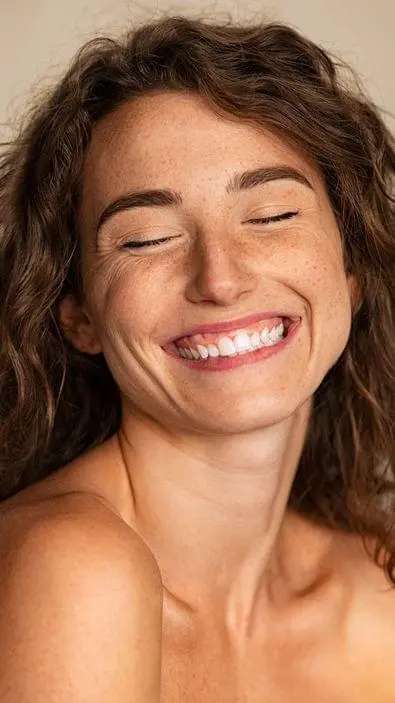
Cheek Corrections
The cheek region can be particularly important for youth and expressiveness of a person’s face. Especially a full cheek region with the corresponding projection on the zygomatic arches leads to the expression of dynamics, youth and health with the corresponding facial expressions (e.g. when laughing). As a result, the opposite leads to an unhealthy, tired and sometimes aging expression on the face. This phenomenon is not gender-specific. For both men and women, a volume deficit in this region can contribute to an unattractive overall face.
Cheek Corrections:
The facts
Length of stay in the clinic
Anesthesia
local anaesthesia or sedation, on request also general anaesthesia
Follow-up treatment
Resumption of social activities
Pains
Durability
Cost
When is a Cheek correction useful?
- For patients whose fat tissue or bones shrink with age
- For patients whose cheeks have lost contour
- For patients who require jaw or facial reconstruction

Testimonials
After a long search I finally found the surgeon I trust! I have a complicated story about Prof. Dr. medical Sinis come. He encouraged me, but was honest with me at the same time.
Types of Cheek Correction
Silicone implants can also be used for cheek augmentation or cheek reconstruction. In this procedure, the silicone implants for cheek augmentation are inserted in such a way that they are inserted from the oral cavity (i.e. coming from the oral mucosa). There is no need to worry about external incisions or scars, as the incision is made in the mouth between the cheek and the jaw. An exception is the combination of cheek augmentation with silicone implants and the lifting of the midface or lower eyelids.
The incision at the outer edge of the eyelid can be used to place the silicone implant for the cheek region at the zygomatic bone. Silicone implants consist of a firm silicone shell and are therefore not malleable like silicone implants used for breast augmentation.
The cheek region can also be sensibly built up with hyaluronic acid. Hyaluronic acid can also be used to fill in wrinkles or other uneven areas of the face. Hyaluronic acid is an endogenous substance that is broken down after a certain time (one to two years). The hyaluronic acid is injected onto the cheek bones and is shaped by the surgeon with massaging movements, resulting in cheeks fitting in harmoniously with the contours of the face. The hyaluronic acid solutions we use are sourced from a premium supplier for aesthetic surgery, who guarantees the purity of the hyaluronic acid with their reputation.
So-called lipotransfer is a part of aesthetic facial surgery. It is very successful to remove the patient’s own fat tissue from the abdomen, thighs or lumbar region and use it for the injection of wrinkles but also for increasing volume in the face. The transplantation of the patient’s own fat for cheek augmentation is a very popular and successful procedure to give the face a more youthful, healthy and fresh expression. The transplantation of autologous fat proceeds in the same way as when other body regions are built up with autologous fat.
The only special thing here are the very fine injection cannulas, which are produced especially for the transplantation of fatty tissue for facial surgery and cheek reconstruction. This allows the fat tissue obtained to be used with little trauma to the face. The healing rates of fatty tissue in the face can even reach 100 percent, so that a second session is not necessary. This means the face represents the best body region for an autologous fat transplantation.
Since the increase in the treatment of lipodystrophies (pathological, sometimes spotty degradation of fatty tissue by various antiviral drugs), there has been a growing need for adjusting or compensating procedures for such substance defects in the fat mantle of the face. This treatment results in the dermal-fat transplant procedure for aesthetic surgery of the face. These endogenous transplants usually originate from the lower abdomen or the pubic or groin region and leave a scar rarely larger than 6 cm.
For this purpose, ovular, triangular, round shapes, among others, can be used. Fat grafts can be obtained in such a way that the overlying dermis (so-called chorium) can be used as an anchor for a transplant. The so-called dermis-fat grafts can be cut to create precisely fitting shapes that treat various volume deficits in the face in such a way that an aesthetically pleasing and harmonious result is achieved. Dermis-fat grafts are usually fixed in place by means of small threads that are led outwards. These are removed after one week. The skin incision for the insertion of the dermis-fat grafts is made during cheek augmentation in such a way that the edge of the lower eyelid is used.
Therefore, cheek correction or rather cheek augmentation with a dermis-fat graft is often combined with a lower eyelid lift or a midface lift.
Sometimes it makes sense to turn the SMAS (Superficial Musculoaponeurotic System) during a facelift or midface lift, to increase cheek area volume. The necessary detailed information can be found in the detailed explanations of the facelift.
Costs
The costs of the initial consultation always depend on the type and extent of the treatment. In principle, the scale of fees for doctors applies to the consultation hours. Thereafter, patients pay 90 € for the initial consultation with anamnesis, collection of previous findings, physical examination and preparation of a therapy and cost plan. This fee is payable once and will not be credited towards further treatment.
Additional appointments and post-operative care are included in the total price of the operation and do not have to be paid separately. This is the only way to ensure a high-quality treatment with sufficient treatment time, during which we can respond to you and your specific needs. In order to ensure the success of the treatment, we have to carry out the consultation with sufficient time and care.
Consultation
Open continuously from Tuesday 08.00 to Saturday 14.00
Open continuously from Tuesday 08.00 to Saturday 14.00

